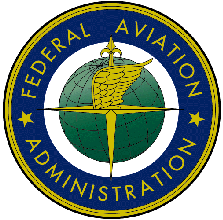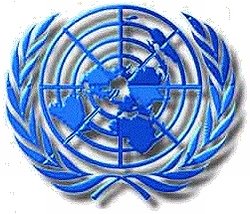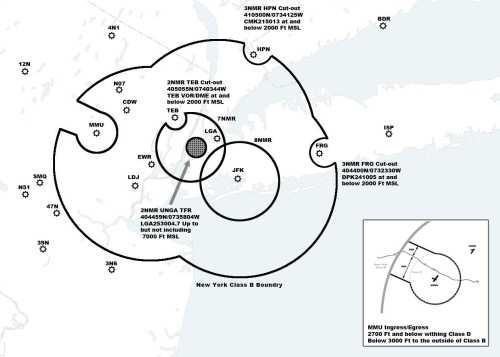United Nations General Assembly TFR Begins September 14th
The FAA has released flight restrictions that will be put in
place in and around New York City for the United Nations
General Assembly-65th session (UNGA-65). Multiple NOTAMs will be
published to cover the events, and the FAA advises pilots to
frequently check for updates during the last two weeks of
September.

The FAA classifies the airspace defined in this advisory and the
published NOTAMs as "National Defense Airspace". Pilots who do not
adhere to the following procedures may be intercepted, detained and
interviewed by Federal Law Enforcement/Security Personnel. Any of
the following additional actions may also be taken against a pilot
who does not comply with the requirements or any special
instructions or procedures announced in the NOTAM.
- The FAA may take administrative action, including imposing
civil penalties and the suspension or revocation of airmen
certificates.
- The United States Government may pursue criminal charges,
including charges under Title 49 of the United States Code, Section
46307.
- The United States Government may use deadly force against the
airborne aircraft, if it is determined that the aircraft poses an
imminent security threat.
The initial NOTAM for the UNGA-65 will be in effect from
September 14th through October 1st 2010, with exact times and dates
to be published later.
Aircraft flight operations are prohibited within a 2NMR of
404459N/0735804W or the JFK VOR/DME 320 degree radial at 11.4NM up
to but not including 7,000 FT MSL, daily 1200-2200 UTC (0800-1700
local) effective at noon on September 14th until 2200 on October
1st, except as specified below and/or unless authorized by ATC in
consultation with the Air Traffic Security Coordinator (ATSC) via
the Domestic Events Network (DEN).

All aircraft operations within the 2NMR area(s) listed above,
are prohibited except for:
- Approved law enforcement, approved air ambulance and military
aircraft directly supporting the United States Secret Service
(USSS).
- Regularly scheduled commercial passenger and all-cargo carriers
operating under one of the following TSA-approved standard security
programs/procedures: Aircraft Operator Standard Security Program
(AOSSP), Full All-Cargo Aircraft Operator Standard Security Program
(FACAOSSP), Model Security Program (MSP), Twelve Five Standard
Security Program (TFSSP) All Cargo, or All-Cargo International
Security Procedure (ACISP) that are arriving into and/or departing
from LaGuardia (LGA), Newark Liberty (EWR) and John F. Kennedy
(JFK) airports only.
- Emergency/life saving flights (medical/law
enforcement/firefighting) operators must coordinated with the FAA
supervisor at the New York TRACON prior to their departure at
516-683-2966 to avoid potential delays.
- All aircraft shall squawk the ATC assigned discrete beacon code
continuously while operating within the TFR. In the event of a
transponder failure, the pilot shall advise ATC and ATC will
provide the most direct course to exit the lateral limits of the
TFR.
- All aircraft must remain in two-way radio communications with
ATC at all times.
- Helicopter operations arriving and departing the West 30th
street (JRA) and East 34th street heliports (6N5), and sea-plane
operations arriving and departing the East 23rd street seaplane
base (6N7), are permitted from September 14 through September 21,
2010, and September 25 through October 1, 2010 provided pilots
comply with 4 and 5 above. Exact time will be published in the
NOTAM. Authorized helicopters/seaplanes must fly ATC assigned
ingress/egress routes.
A second NOTAM will be in effect from September 22nd through
September 25th, 2010 within a 7NMR (inner core) of 404501N/0735938W
or the LGA 259 degree radial at 5.8NM up to but not including
18,000 FT MSL excluding a 2NMR of 405055N/0740344W or the TEB
VOR/DME up to and including 2,000 FT MSL.
Within the lateral limits of the New York Class B Airspace
(outer area) from the surface up to but not including 18,000 FT MSL
excluding a 3NMR of 404400N/0732330W or the DPK 241 degree radial
at 5.3NM from the surface up to and including 2,000 FL MSL
excluding a 3NMR of 410500N/0734125W or the CMK 215 degree radial
at 12.8NM from the surface up to and including 2,000 FT MSL.
Except as specified below and/or unless authorized by ATC in
consultation with the Air Traffic Security Coordinator (ATSC) via
the Domestic Events Network (DEN) all aircraft operations within
the 7NMR area listed above, known as the inner core, are prohibited
except for those listed for the NOTAM above. However, helicopter
operations arriving and departing the West 30th Street (JRA), East
34th Street (6N5) and Port Authority-Downtown-Manhattan/Wall Street
(JRB) heliports and fixed wing seaplane operations arriving and
departing 6N7 that have been TSA security screened, and have met
gateway requirements described in paragraph D below, are
authorized. TSA screening will be available daily during the TFRs
and exact times will be published in the NOTAM. Special VFR
operations and overflights of Manhattan are not permitted.
In the outer area, all aircraft operations are prohibited within
the lateral confines of the New York Class B airspace, from the
surface, up to but not including 18,000 FT MSL excluding a 3NMR
around Farmingdale Republic, NY (FRG) and Westchester County, NY
(HPN) airports below 2,000 FT MSL, for arrivals and departures to
FRG and HPN airports only except for the following operations and
as described below:
- Aircraft are on an active IFR or VFR flight plan. Pilots must
file with the Flight Service Station (FSS). DUATS filed flight
plans will not be accepted.
- All aircraft shall squawk the ATC assigned discrete beacon code
continuously while operating within the TFR. In the event of a
transponder failure, the pilot shall advise ATC and ATC will
provide the most direct course to exit the lateral limits of the
TFR.
- All aircraft must remain in two-way radio communications with
ATC at all times.
- The Farmingdale Republic, NY (FRG) and Westchester County, NY
(HPN airports ingress/egress procedure areas are for arrivals and
departures only.
- Fixed wing operations are limited to aircraft arriving or
departing local airfields. Aircraft may not loiter.
- Helicopter operations are permitted to land and depart local
airfields and transit the airspace from the 7 nautical mile radius
to the 20 nautical mile boundary of the New York Class B airspace
provided pilots comply with part B, 1, 2 and 3 above. Helicopters
may not loiter.
- Emergency/life saving flights (medical/law
enforcement/firefighting) operators must coordinated with the FAA
supervisor at the New York TRACON prior to their departure at
516-683-2966 to avoid potential delays.
The following aeronautical operations are not authorized within
the New York Class B airspace LGA 20 nautical mile, JFK 20 nautical
mile, and EWR 20 nautical mile boundaries, from the surface, up to
but not including FL180: Flight training, practice instrument
approaches, aerobatic flight, glider operations, parachute
operations, ultralight, hang gliding, balloon operations,
agriculture/crop dusting, animal population control flight
operations, banner towing operations, model aircraft operations,
model rocketry, unmanned aerial systems (UAS).
D. Gateway airports have been created at Farmingdale Republic
Airport, NY (FRG) and Linden Airport, NJ (LDJ) by FAA, TSA and U.S.
Secret Service to accommodate helicopters arriving and departing
JRA, JRB, 6N5 and VFR fixed wing seaplane operations arriving and
departing 6N7. TSA screening will be available daily during the
TFRs and exact times will be published in the NOTAM. Special ATC
procedures and routes to and from these airports will be assigned
prior to departure from a gateway airport. Intermediate stops are
not authorized unless an emergency exists.

A third NOTAM will be in effect from September 22nd through
September 25th, 2010 covering ingress/egress procedures for
Morristown airport (MMU), New Jersey. This notice supplements the
requirements for flight within the New York (NY) Class B Temporary
Flight Restriction (TFR), as described in the second NOTAM above,
for aircraft ingress/egress operations at MMU only.
The MMU ingress/egress procedures area is defined as follows:
That airspace at and below the ceiling of the MMU Class D airspace
(at and below 2,700 FT MSL) as depicted on the VFR terminal area
chart, New York. Additionally, the MMU ingress/egress procedures
area extends to the Northwest of MMU and is defined as follows:
That airspace below the floor of the New York Class B airspace
(below 3,000 FT MSL) bounded on the North by a line 2NM North of
highway route 10 and bounded on the South by a line 4NM South of
highway route 10. The MMU ingress/egress procedures area abuts the
MMU Class D airspace to the East and continues west to the New York
Class B 20NM arc. The MMU ingress/egress procedures area is further
defined by the following coordinates: beginning at:
405148N/0742325W, to 405430N/0743010W, to 404900N/0743445W, to
404730N/0743010W.
Operations are strictly limited to aircraft arriving to or
departing from MMU and only apply during time frames when the MMU
air traffic control tower is open. Pilots arriving/departing MMU
shall receive and continuously transmit an ATC assigned beacon code
prior to entering the MMU ingress/egress procedures area. Pilots
arriving/departing within the MMU ingress/egress procedures area
must establish two-way communications with MMU air traffic control
tower on frequency 118.1 or 353.9 , and remain in two-way radio
communications with MMU air traffic control tower at all times.
Flight training, practice instrument approaches, aerobatic
flight, glider operations, parachute operations, ultralight, hang
gliding, balloon operations, agriculture/crop dusting, animal
population control flight operations, banner towing operations,
model aircraft operations, model rocketry, unmanned aerial systems
(UAS), and any other operation that is not an arrival or departure
to/from MMU are not authorized.
A fourth NOTAM will be in effect on September 22nd and September
25th, 2010. Check NOTAM for exact times and dates. Aircraft flight
operations are prohibited within an 8NMR of 403800N/0734618W or the
JFK VOR/DME up to but not including 18,000 FT MSL, except for the
following operations and as described below:
- Approved law enforcement, approved air ambulance and military
aircraft directly supporting the United States Secret Service
(USSS).
- Regularly scheduled commercial passenger and all-cargo carriers
operating under one of the following TSA-approved standard security
programs/procedures: Aircraft Operator Standard Security Program
(AOSSP), Full All-Cargo Aircraft Operator Standard Security Program
(FACAOSSP), Model Security Program (MSP), Twelve Five Standard
Security Program (TFSSP) All Cargo, or All-Cargo International
Security Procedure (ACISP) that are arriving into and/or departing
from John F. Kennedy airport.
- Emergency/life saving flights (medical/law
enforcement/firefighting) operators must coordinated with the FAA
supervisor at the New York TRACON prior to their departure at
516-683-2966 to avoid potential delays.
- All aircraft shall squawk the ATC assigned discrete beacon code
continuously while operating within the TFR. In the event of a
transponder failure, the pilot shall advise ATC and ATC will
provide the most direct course to exit the lateral limits of the
TFR.
- All aircraft must remain in two-way radio communications with
ATC at all times.
The NOTAMs discussed in this advisory may change with little or
no notice. Pilots are advised to check NOTAMs frequently for
possible changes prior to operations in the area. Pilots are
strongly encouraged to contact a Flight Service Station at
1-800-WX-BRIEF (1-800-992-7433) prior to flight to check for all
current NOTAMS.
 ANN's Daily Aero-Linx (05.06.25)
ANN's Daily Aero-Linx (05.06.25) ANN's Daily Aero-Term (05.06.25): Ultrahigh Frequency (UHF)
ANN's Daily Aero-Term (05.06.25): Ultrahigh Frequency (UHF) ANN FAQ: Q&A 101
ANN FAQ: Q&A 101 Classic Aero-TV: Virtual Reality Painting--PPG Leverages Technology for Training
Classic Aero-TV: Virtual Reality Painting--PPG Leverages Technology for Training Airborne 05.02.25: Joby Crewed Milestone, Diamond Club, Canadian Pilot Insurance
Airborne 05.02.25: Joby Crewed Milestone, Diamond Club, Canadian Pilot Insurance





